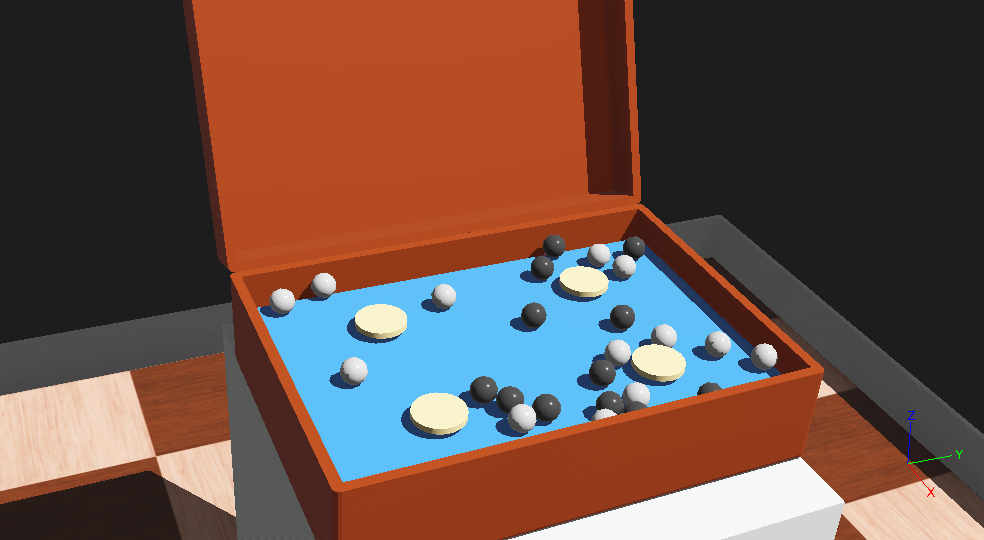Suitcase Robot Model¶
The suitcase robot model simulates a testbed for mounting actuation inside a suitcase. It corresponds closely to the physical prototype. It is intended as a basis for exploring hardware to add into the suitcase.
This model is demonstrated in the suitcase-demo.wbt world.
This model makes use of several objects defined in proto files: suitcase.proto, pedestal.proto, and ball_array.proto. These make use of embedded Lua scripting to parametrically generate world objects.

Screenshot of Webots model of actuated suitcase sitting on a gallery pedestal.¶
Contents
Sample Control Code¶
1 2 3 4 5 6 7 8 9 10 11 12 13 14 15 16 17 18 19 20 21 22 23 24 25 26 27 28 29 30 31 32 33 34 35 36 37 38 39 40 41 42 43 44 45 46 47 48 49 50 51 52 53 54 55 56 57 58 59 60 61 62 63 64 65 66 67 68 69 70 71 72 73 74 75 76 77 78 79 80 81 82 83 84 85 86 | # suitcase.py
#
# Sample Webots controller file for driving the four-motor suitcase actuator insert.
# No copyright, 2021, Garth Zeglin. This file is explicitly placed in the public domain.
print("loading suitcase.py...")
# Standard Python imports.
import math, random
# Import the Webots simulator API.
from controller import Robot
# Define the time step in milliseconds between controller updates.
EVENT_LOOP_DT = 200
################################################################
# The sample controller is defined as an class which is then instanced as a
# singleton control object. This is conventional Python practice and also
# simplifies the implementation of the Arduino interface which connects this
# code to physical hardware.
class Suitcase(Robot):
def __init__(self):
# Initialize the superclass which implements the Robot API.
super().__init__()
robot_name = self.getName()
print("%s: controller connected." % (robot_name))
# Fetch handle for the four stepper motors.
j1 = self.getDevice('motor1')
j2 = self.getDevice('motor2')
j3 = self.getDevice('motor3')
j4 = self.getDevice('motor4')
# Convenience list of all actuators.
self.motors = [j1, j2, j3, j4]
# Configure the motors for velocity control by setting
# the position targets to infinity.
for j in self.motors:
j.setPosition(float('inf'))
j.setVelocity(0)
return
def run(self):
# Run loop to execute a periodic script until the simulation quits.
# If the controller returns -1, the simulator is quitting.
# Time until next control event in milliseconds.
event_timer = 0
state_index = 'rest'
while self.step(EVENT_LOOP_DT) != -1:
# Read simulator clock time.
t = self.getTime()
# Change the target velocity in a cycle with a two-second period.
event_timer -= EVENT_LOOP_DT
if event_timer < 0:
if state_index == 'rest':
state_index = 'moving'
event_timer += 1500
for j in self.motors:
vel = math.pi * (1 - 2*random.random())
j.setVelocity(vel)
else:
state_index = 'rest'
event_timer += 500
for j in self.motors:
j.setVelocity(0)
print(f"Switched to state {state_index}")
################################################################
# If running directly from Webots as a script, the following will begin execution.
# This will have no effect when this file is imported as a module.
if __name__ == "__main__":
robot = Suitcase()
robot.run()
|